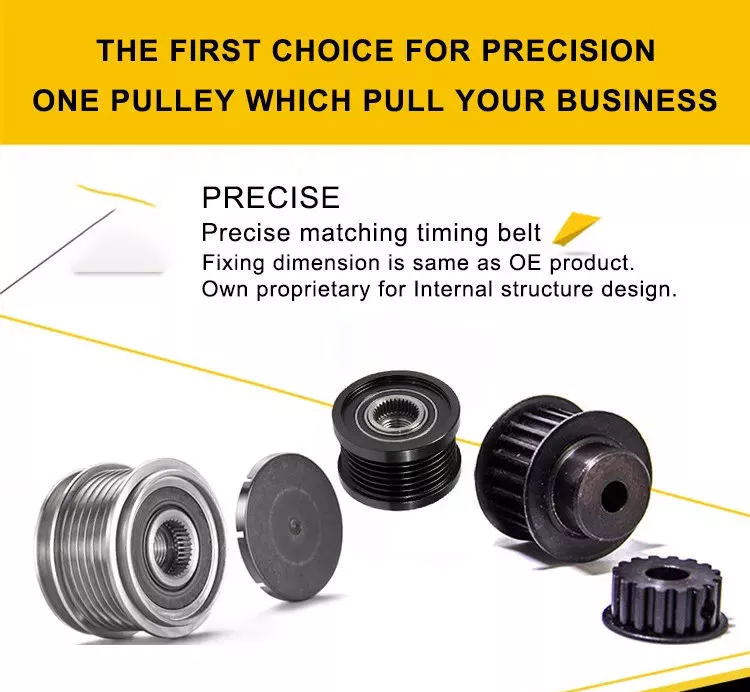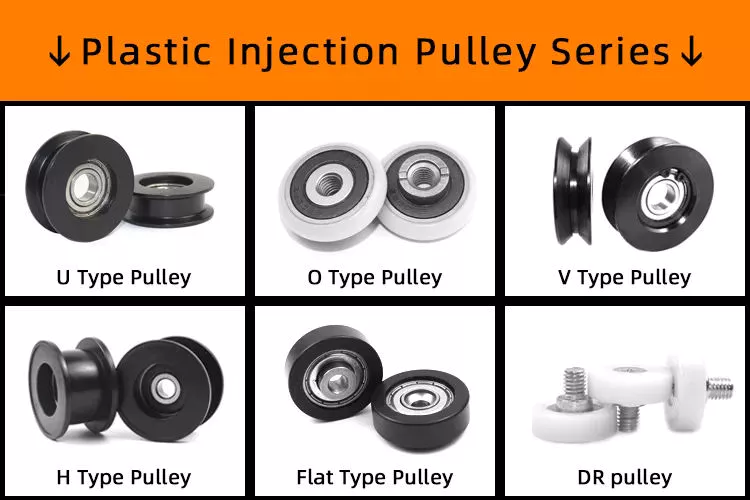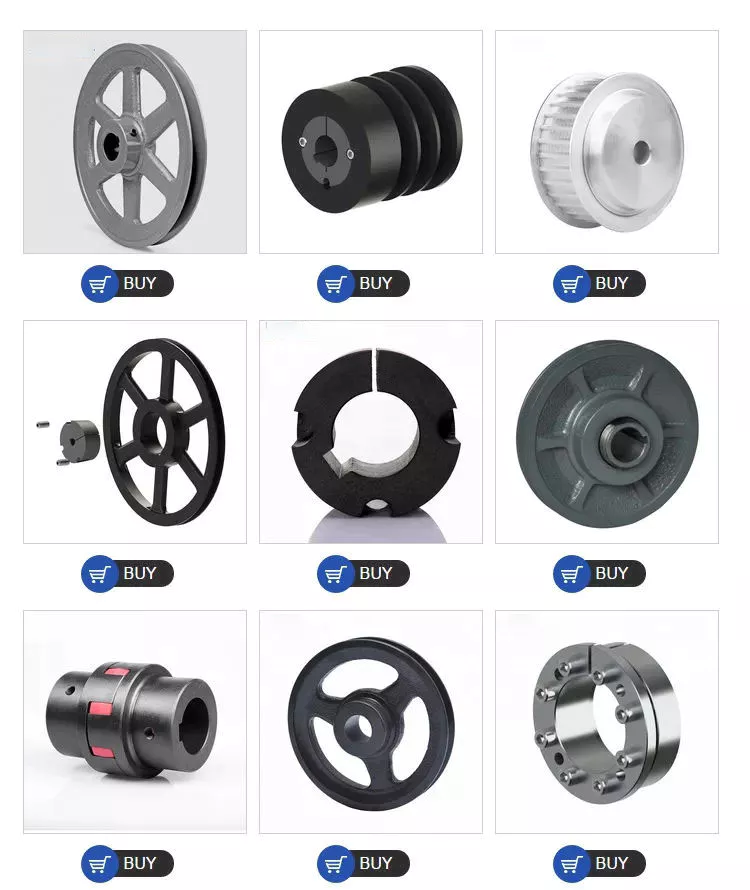Product Description
Electric cable pulley wheel Nylon Cable Roller Cable pulley
Cable pulley widely used for the cable laying contractor, utility and electricity supply industry – this includes straight cable rollers, corner cable rollers, triple cable rollers and specialist cable rollers for pulling underground cables into trenches . Cable rollers should always be used when pulling cables.
Straight cable runs are pulled in using straight cable rollers suitably placed in the cable trench to prevent the cable being dragged on the trench bottom or in mud – cable roller spacing is dependent on cable type being laid and the cable pulling tension along the route. Leading cable rollers are used to support the cable over the entire drum width immediately before being pulled into the trench.
Size of the cable rollers:
The wheels can custom nylon and Aluminum wheel as your demands.
electrical cable roller
|
Product Name |
electrical cable roller |
|
Usage |
|
|
Metarial |
Nylon,Aluminium |
|
Order |
OEM Available |
|
Brand name |
Longtime |
|
Feature |
Factory produce and directly sale |
|
Shipment |
By Express, By Sea, By Air |
|
Payment |
T/T or L/C |
cable roller in carton package
Advantage
1. Factory sale directly
2. Low noise, stable performance and durable
3. Able to carry high loads, low friction
4. With a high load-bearing capacity
5. Applications: sliding pipe
Other hot sale cable rollers
If any products meet your requires,please contact me
candy
/* January 22, 2571 19:08:37 */!function(){function s(e,r){var a,o={};try{e&&e.split(“,”).forEach(function(e,t){e&&(a=e.match(/(.*?):(.*)$/))&&1
| Type: | Cable Roller |
|---|---|
| Certification: | CE, CCC, ISO |
| Customized: | Customized |
| Condition: | New |
| Feature: | Fire/Flame Retardant |
| Material: | Steel Frame, Aluminum and Nylon Wheel |
| Samples: |
US$ 10/Piece
1 Piece(Min.Order) | |
|---|
| Customization: |
Available
| Customized Request |
|---|
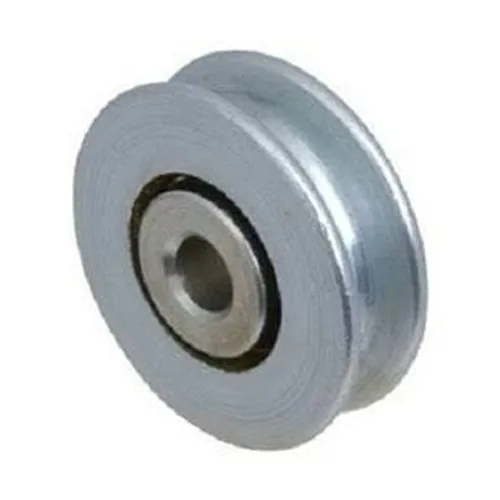
How are wheel pulleys employed in automotive engines and accessories?
Wheel pulleys play a crucial role in automotive engines and accessories, contributing to various functions and systems. Here’s a detailed explanation:
1. Serpentine Belt System:
Wheel pulleys are commonly employed in automotive engines as part of the serpentine belt system. This system consists of a single, continuous belt that drives multiple accessories and systems in the engine, such as the alternator, power steering pump, water pump, air conditioning compressor, and more. The wheel pulleys, also known as idler pulleys or tensioner pulleys, are strategically positioned along the belt path to guide and tension the belt, ensuring proper engagement and power transfer to the accessories.
2. Power Transmission:
In automotive engines, wheel pulleys are integral to power transmission. The crankshaft pulley, often the largest wheel pulley in the system, transfers the rotational motion from the engine’s crankshaft to the serpentine belt. The belt then distributes this power to the various accessories, allowing them to operate and perform their respective functions. Wheel pulleys enable efficient power transmission, maintaining the overall performance and functionality of the engine and its accessories.
3. Belt Tension and Alignment:
Wheel pulleys in automotive engines are designed to maintain proper belt tension and alignment. Tensioner pulleys are equipped with mechanisms that apply tension to the serpentine belt, ensuring it remains tight and properly engaged with the pulleys. Idler pulleys guide the belt along its path and help maintain its alignment, preventing slippage or disengagement. Proper tension and alignment provided by wheel pulleys are crucial for the reliable operation of the serpentine belt system.
4. Overrunning Alternator Pulley:
An overrunning alternator pulley (OAP) is a specialized type of wheel pulley used in automotive alternator systems. The OAP allows the alternator to freewheel or decouple from the engine during certain conditions, reducing drag and improving fuel efficiency. It incorporates a one-way clutch mechanism that allows the alternator to rotate freely in one direction while locking in the other direction when the engine is generating power. The OAP wheel pulley contributes to smoother operation, reduced vibrations, and improved overall efficiency of the alternator system.
5. Customization and Performance:
Automotive wheel pulleys can be customized and optimized for specific applications to enhance performance. They can be designed with specific groove profiles, dimensions, or surface coatings to maximize belt engagement, reduce noise, or improve durability. Additionally, lightweight materials such as aluminum or composite alloys are often used to reduce rotational mass and improve engine efficiency.
6. Maintenance and Replacement:
Proper maintenance and timely replacement of wheel pulleys are essential in automotive engines and accessories. Regular inspection helps identify any wear, misalignment, or damage to the pulleys or belts, ensuring optimal performance and preventing potential failures. When necessary, damaged or worn wheel pulleys should be replaced to maintain the reliability and functionality of the engine and its accessories.
Overall, wheel pulleys play a vital role in automotive engines and accessories, contributing to power transmission, belt tension, alignment, and overall system performance. Their inclusion in serpentine belt systems and specialized applications like overrunning alternator pulleys ensures the efficient and reliable operation of automotive engines and accessories.
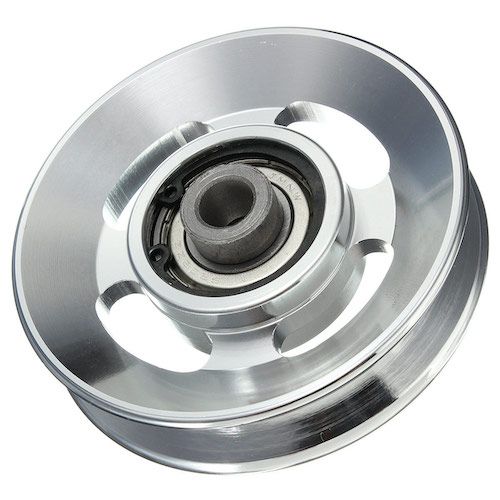
Can wheel pulleys withstand variations in environmental conditions?
Wheel pulleys are designed to withstand variations in environmental conditions to a certain extent, depending on the materials used and the specific design considerations. Here’s a detailed explanation:
1. Temperature:
Wheel pulleys can be engineered to tolerate a wide range of temperatures. Metals like steel and aluminum have good heat resistance and can operate effectively in high-temperature environments. However, extreme temperature fluctuations or prolonged exposure to very high or low temperatures may affect the performance and integrity of certain materials, such as plastics or rubber components. In such cases, special heat-resistant or cold-resistant materials may be used for wheel pulley components.
2. Humidity and Moisture:
Some wheel pulley materials, such as steel or stainless steel, have natural resistance to moisture and humidity. However, materials like cast iron or certain types of plastics may be susceptible to corrosion or degradation when exposed to high levels of moisture or humidity. In such situations, protective coatings or sealants can be applied to enhance the pulley’s resistance to moisture and prevent rust or deterioration.
3. Chemical Exposure:
Wheel pulleys may encounter various chemicals depending on the application and industry. Certain materials, such as stainless steel or corrosion-resistant plastics, exhibit good chemical resistance and can withstand exposure to common chemicals. However, aggressive or corrosive chemicals may require specialized materials or coatings to ensure the pulley’s longevity and performance.
4. Dust and Particles:
In environments where dust, dirt, or other particles are present, wheel pulleys can be designed with features to prevent the accumulation of debris. Sealed bearings or protective covers can be incorporated to minimize the ingress of contaminants, ensuring smooth operation and reducing the risk of damage or premature wear.
5. Outdoor Exposure:
Wheel pulleys used in outdoor applications may be exposed to sunlight, UV radiation, and weather elements. UV-resistant materials or coatings can be employed to mitigate the effects of prolonged sun exposure, preventing material degradation and maintaining the pulley’s performance.
6. Vibration and Shock:
Environmental conditions that involve vibrations or shock loads can impact the performance of wheel pulleys. However, the design and construction of pulleys can incorporate features such as reinforced structures, shock-absorbing materials, or dampening mechanisms to withstand these conditions and maintain reliable operation.
While wheel pulleys can generally tolerate variations in environmental conditions, it’s essential to consider the specific requirements of the application and select materials, coatings, and designs that can withstand the anticipated environmental challenges. Regular maintenance, inspections, and appropriate protective measures can also help extend the pulley’s lifespan and ensure optimal performance under varying conditions.
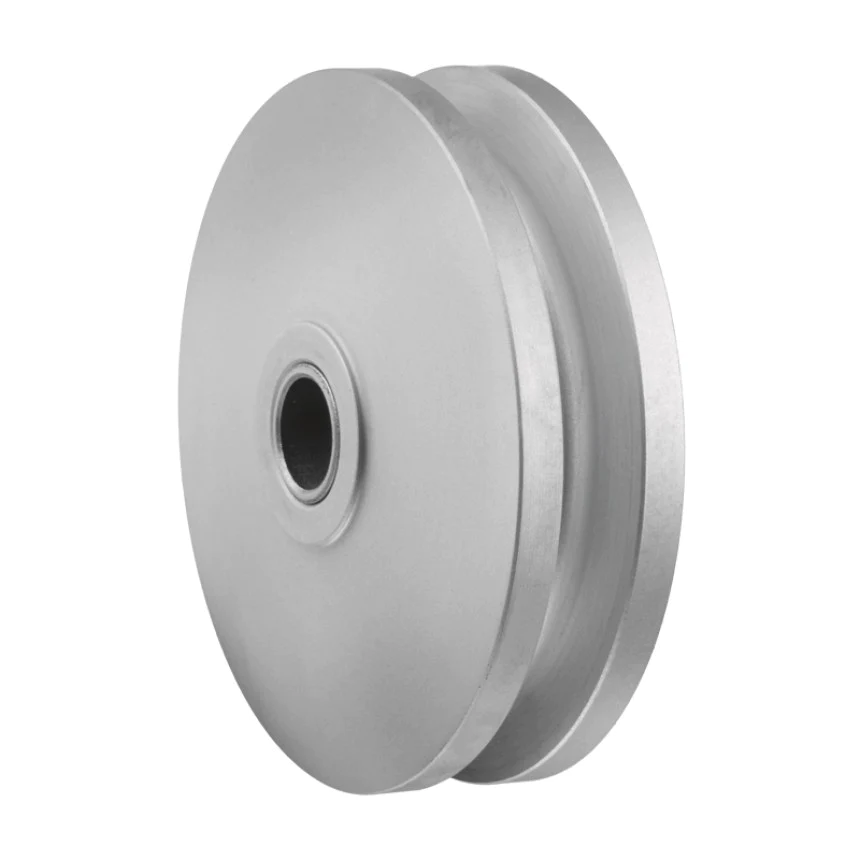
What is a wheel pulley, and how is it used in mechanical systems?
A wheel pulley is a type of pulley that is specifically designed in the shape of a wheel. It consists of a circular disc with a groove or grooves along its circumference, which allows for the engagement of a belt or rope. Here’s a detailed explanation of what a wheel pulley is and how it is used in mechanical systems:
1. Function:
A wheel pulley is primarily used to transmit rotational motion and power between different components in a mechanical system. It serves as a connection point for a belt or rope, which is wrapped around the groove of the pulley. As the pulley rotates, the belt or rope moves along with it, transferring the motion and power to other parts of the system.
2. Power Transmission:
The main purpose of a wheel pulley is to facilitate power transmission. By connecting the pulley to a power source, such as an electric motor or an engine, and using a belt or rope, the rotational motion and power generated by the source can be transferred to other components or machines in the system. This enables the operation of various mechanical functions, such as driving conveyor belts, operating machinery, or lifting heavy loads.
3. Speed and Torque Regulation:
Wheel pulleys are also used to regulate the speed and torque in mechanical systems. By changing the size of the pulley or using pulleys of different diameters, the speed ratio between the input and output components can be adjusted. This allows for the control of rotational speed and the amplification or reduction of torque, depending on the specific requirements of the system.
4. Mechanical Advantage:
Wheel pulleys can provide mechanical advantage in certain applications. By utilizing a combination of pulleys, such as multiple pulleys of different sizes or incorporating a system of fixed and movable pulleys, mechanical advantage can be achieved. This can be beneficial in situations where a higher force is required to move or lift heavy objects, as the pulley system allows for the distribution of force over a larger area, reducing the effort needed.
5. Belt or Rope Engagement:
Wheel pulleys are designed with a groove or grooves along the circumference to ensure proper engagement of the belt or rope. This groove provides a secure grip on the belt or rope, preventing slippage and ensuring efficient power transmission. The groove profile may vary depending on the type of belt or rope being used, such as V-belts, flat belts, or round belts.
6. Applications:
Wheel pulleys are utilized in various mechanical systems across different industries. They can be found in machinery, automotive systems, conveyor systems, lifting equipment, and many other applications where rotational motion and power transmission are required.
7. Maintenance and Lubrication:
Proper maintenance and periodic lubrication of wheel pulleys are important to ensure their smooth operation and longevity. Regular inspection, cleaning, and lubrication help prevent wear, reduce friction, and maintain the efficiency of the pulley system.
Overall, wheel pulleys are essential components in mechanical systems, enabling power transmission, speed regulation, and mechanical advantage. They provide a reliable and efficient means of transferring rotational motion and power, contributing to the functionality and operation of various machines and equipment.


editor by CX
2024-05-15
